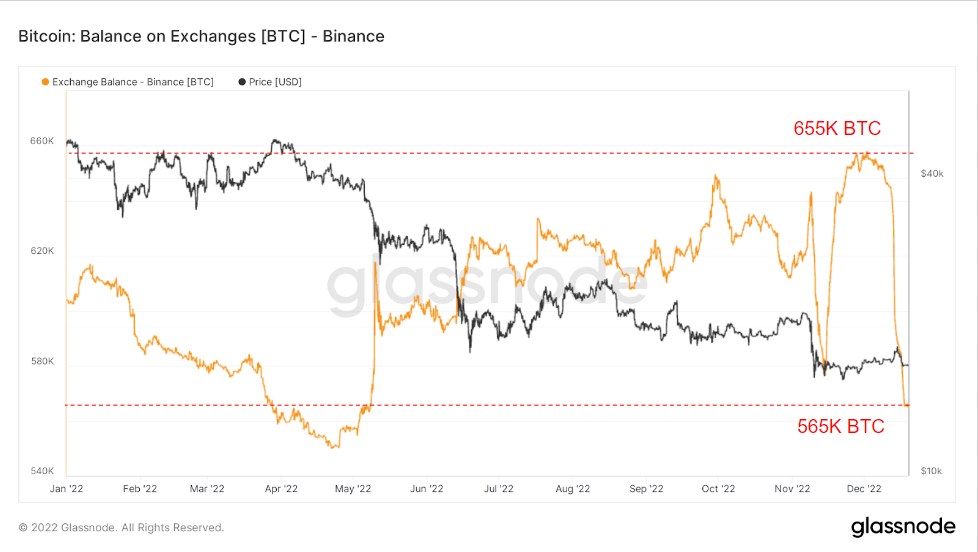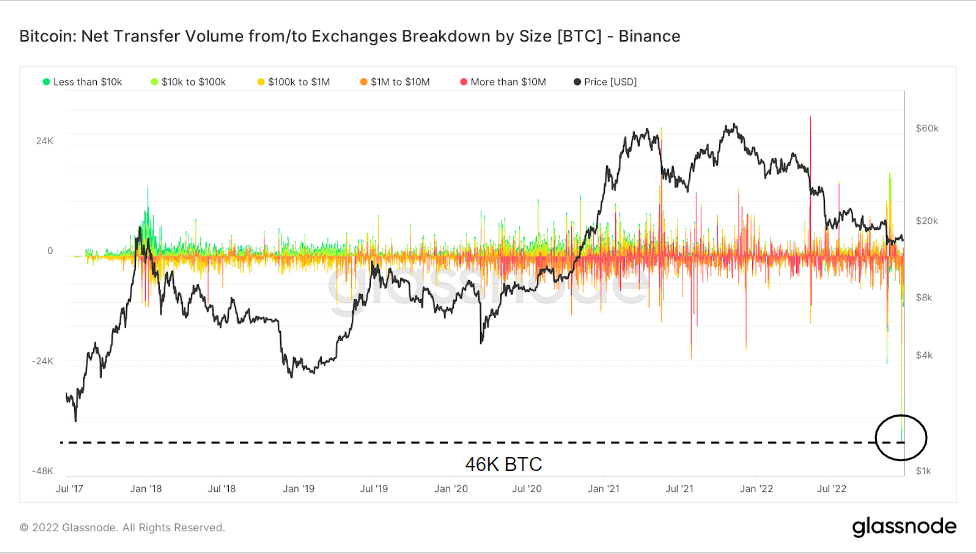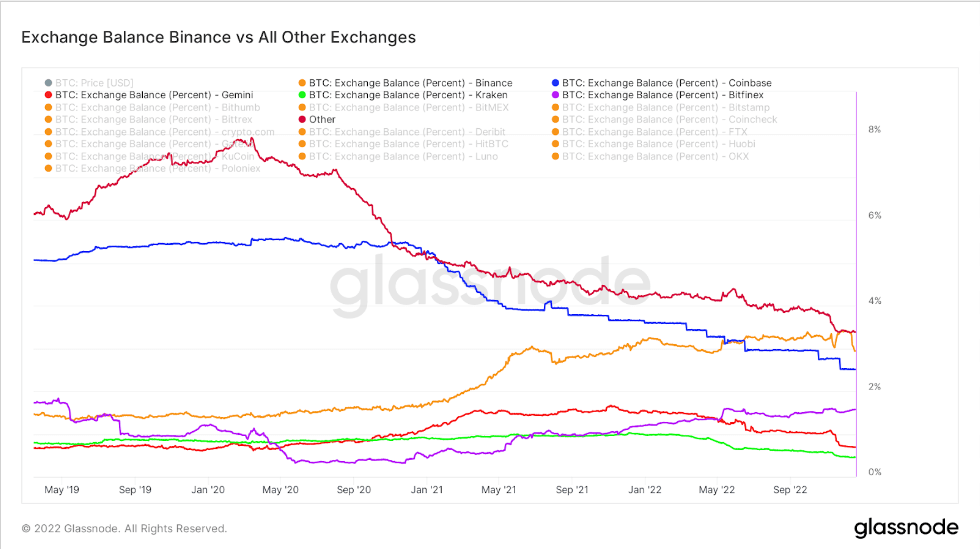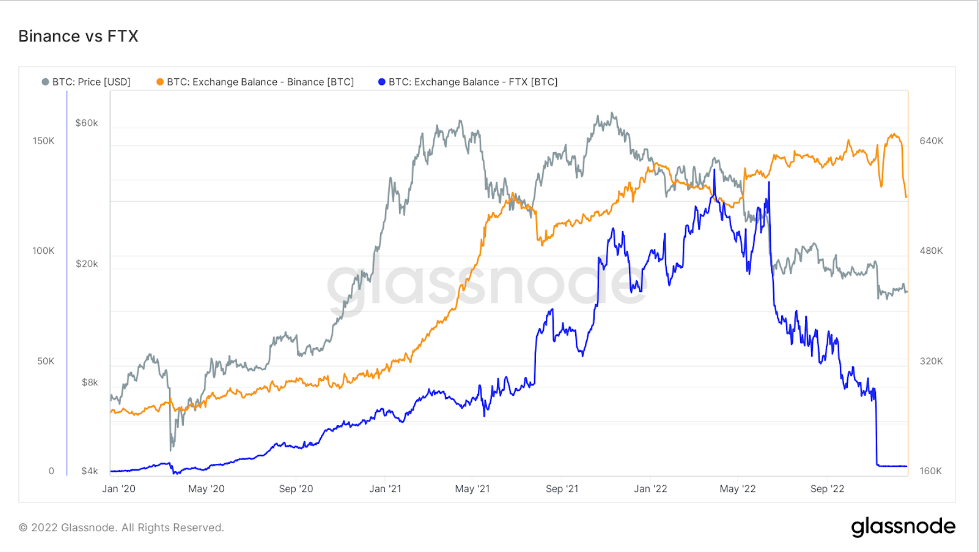 Bitcoin balances on exchanges are shrinking and Binance is no exception
Bitcoin balances on exchanges are shrinking and Binance is no exception Bitcoin balances on exchanges are shrinking and Binance is no exception
Binance saw 90,000 BTC leave the exchange in a single week in December. The exchange says it's business as usual but could the outflow trigger a bigger bank run in the future?

Cover art/illustration via CryptoSlate. Image includes combined content which may include AI-generated content.
The collapse of FTX left a gaping hole in the crypto market. The failed exchange accounted for a significant chunk of the global trading volume and kept Binance from becoming the de facto ruler of the market.
With FTX now gone, Binance took the throne and became the largest and potentially the most important company in the crypto industry. The exchange now accounts for over 50% of the global spot and derivatives market, with its dominance increasing daily.
However, only looking at Binance’s trading volume fails to paint the complete picture of where the exchange stands.
To determine the market’s sentiment, one must always look at Bitcoin first. The driving force of the crypto industry, Bitcoin’s movement, and distribution across exchanges show the market’s sentiment and can be used to determine future market trends.
Looking at Bitcoin balances on exchanges shows the amount of BTC that could be used to generate selling pressure. It also illustrates the overall maturity and health of the market — the less Bitcoin there is on exchanges, the more people see it as a long-term investment.
As of Dec. 23, the total amount of BTC held on Binance stands at 565,00 BTC. This is a sharp drop from the yearly high of 655,000 BTC recorded in December when over $1 billion worth of BTC was deposited into the exchange.
The 90,000 BTC difference in Binance’s balance was created in a single week in mid-December. CryptoSlate analysis of on-chain data showed that over $600 million worth of BTC was withdrawn from the exchange in a single day.

Looking at the net flow of Bitcoin by the value of the transactions shows that the retail market was responsible for most of the withdrawals in December.
The graph below ranks Bitcoin net flows by their USD value, ranging from less than $10,000 to more than $10 million—transfers with a value smaller than $10,000 represented the majority of inflows to Binance until 2021.
From 2021 until now, large transfers with a value between $1 million and $10 million made up the most significant part of inflows and outflows from Binance.

Comparing Binance to other exchanges shows that the diminishing Bitcoin balance is a market-wide trend. However, Binance experienced the sharpest decrease in its BTC balance this month, with other exchanges like Coinbase, Kraken, Gemini, and Bitfinex all seeing smaller drops.

The only exchange that saw its Bitcoin balance increase this year was Bitfinex. Conversely, Coinbase has seen almost vertical drops in its balances throughout the year and currently holds around 2.5% of the Bitcoin supply.
It’s still too early to tell whether the drop in Binance’s BTC balance should be a cause for concern. However, the exchange maintains its business as usual despite the market turmoil, assuring its users and investors that it has solid financial footing and deals with healthy trading volumes.
However, comparing Binance’s outflows to the outflows seen on FTX shows that they could be cause for concern.
At the beginning of the year, FTX had around 150,000 BTC. After that, the exchange saw its Bitcoin balance increase until a sharp correction in the spring, but it returned to the yearly high right at the beginning of the summer. Then, in June 2022, over 70,000 BTC left FTX in two weeks.

The sharp outflow triggered a downward spiral until November and saw FTX’s Bitcoin balance reach a two-year low. The exchange then collapsed and triggered a global market meltdown, the consequences of which are still being felt.
The 70,000 BTC outflow triggered FTX’s Bitcoin balance problem is much smaller than the 90,000 BTC outflow Binance saw in a week. However, we are yet to see whether the exchange’s Bitcoin balance will improve or whether the downward spiral will continue into 2023.



 CoinGlass
CoinGlass 


 Farside Investors
Farside Investors 






























































































